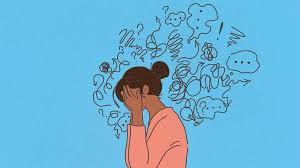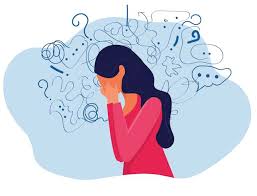Anxiety attacks, also known as panic attacks, can be terrifying and debilitating experiences. They often strike unexpectedly, causing intense feelings of fear, apprehension, and physical discomfort. However, with the right strategies and support, it is possible to manage anxiety attacks effectively and move from panic to peace. This guide explores various techniques and approaches to help individuals cope with and overcome anxiety attacks, empowering them to regain control of their lives.
Understanding Anxiety Attacks
Anxiety attacks are sudden episodes of intense fear or discomfort that reach peak intensity within minutes. They can occur in response to specific triggers or seemingly out of the blue. Common symptoms of anxiety attacks include:
Rapid heartbeat
Chest pain or discomfort
Shortness of breath
Sweating
Trembling or shaking
Feeling of choking
Nausea or stomach discomfort
Dizziness or lightheadedness
Fear of losing control or going crazy
Fear of dying
It is important to recognize that anxiety attacks, while distressing, are not life-threatening. They are a result of the body’s natural fight-or-flight response being triggered inappropriately.
Techniques for Managing Anxiety Attacks
Deep Breathing Exercises
Deep breathing exercises can help calm the body’s stress response and alleviate symptoms of anxiety attacks. Practicing slow, deep breaths can regulate heart rate and oxygen levels, promoting a sense of calmness.
How to Practice Deep Breathing
Find a comfortable seated position.
Close your eyes and take a slow, deep breath in through your nose, filling your lungs.
. Hold your breath for a few seconds.
Slowly exhale through your mouth, letting out all the air.
Repeat this process several times, focusing on the rhythm of your breath.
Grounding Techniques
Grounding techniques help anchor individuals in the present moment, preventing them from feeling overwhelmed by anxiety. These techniques involve using the senses to connect with the environment and shift attention away from anxious thoughts.
Examples of Grounding Techniques:
Name five things you can see, four things you can touch, three things you can hear, two things you can smell, and one thing you can taste.
Focus on the sensation of your feet touching the ground or the texture of an object in your hand.
Use a grounding object, such as a stress ball or a piece of jewelry, to provide tactile stimulation.
. Progressive Muscle Relaxation (PMR)
Progressive Muscle Relaxation (PMR) is a technique that involves tensing and then relaxing different muscle groups in the body. It helps release physical tension and promote relaxation, reducing symptoms of anxiety.
Steps for Progressive Muscle Relaxation
Find a quiet, comfortable space to sit or lie down.
2 Release the tension and allow the muscles to relax completely.
Move systematically through the body, tensing and relaxing each muscle group, including the legs, abdomen, arms, shoulders, and face.
Cognitive Restructuring
Cognitive restructuring involves challenging and reframing negative thought patterns that contribute to anxiety attacks. By identifying irrational beliefs and replacing them with more realistic and balanced perspectives, individuals can reduce the intensity of anxiety symptoms.
Steps for Cognitive Restructuring
Question its accuracy and evidence supporting it.
. Generate alternative, more balanced interpretations of the situation.
. Consider the potential outcomes of these alternative interpretations.
Choose to focus on the most rational and helpful perspective.
. Mindfulness Meditation
Mindfulness meditation cultivates present-moment awareness and nonjudgmental acceptance of thoughts and emotions. It can help individuals observe their anxiety without becoming overwhelmed by it, fostering a sense of calm and equanimity.
How to Practice Mindfulness Meditation
Find a quiet, comfortable space to sit or lie down.
Close your eyes and bring your attention to your breath.
Notice the sensations of each inhale and exhale, without trying to control or change your breath.
. When your mind wanders, gently redirect your focus back to your breath.
. Continue this practice for a few minutes, gradually increasing the duration as you become more comfortable.
Lifestyle Modifications
Making lifestyle modifications can help reduce the frequency and severity of anxiety attacks. Prioritizing self-care, maintaining a balanced diet, getting regular exercise, and prioritizing adequate sleep can all contribute to overall well-being and resilience against anxiety.
Tips for Lifestyle Modifications
Engage in regular physical activity, such as walking, jogging, or yoga.
Eat a balanced diet rich in fruits, vegetables, whole grains, and lean proteins.
Limit caffeine and alcohol consumption, as they can exacerbate anxiety symptoms.
Practice good sleep hygiene by establishing a consistent sleep schedule and creating a relaxing bedtime routine.
Seeking Professional Support
While self-help techniques can be beneficial, individuals experiencing severe or persistent anxiety attacks may benefit from professional support. Therapists, counselors, and psychiatrists can provide evidence-based treatments, such as cognitive-behavioral therapy (CBT) or medication, tailored to individual needs.
Therapy:
Participating in individual or group therapy sessions to learn coping skills and address underlying issues contributing to anxiety.
Medication:
Taking prescribed medications, such as selective serotonin reuptake inhibitors (SSRIs) or benzodiazepines, to alleviate symptoms of anxiety.
Support Groups:
Joining support groups or online communities to connect with others who understand and validate your experiences.
Conclusion
Managing anxiety attacks requires a multifaceted approach that addresses both the physical and psychological aspects of anxiety. By practicing deep breathing exercises, grounding techniques, progressive muscle relaxation, cognitive restructuring, mindfulness meditation, and making lifestyle modifications, individuals can reduce the frequency and severity of anxiety attacks and improve their overall quality of life. Additionally, seeking professional support when needed can provide valuable guidance and resources for coping with anxiety. With time, patience, and persistence, it is possible to move from panic to peace and regain control over one’s mental health.





